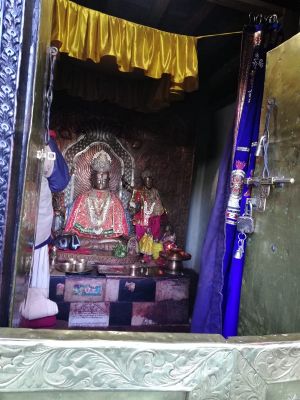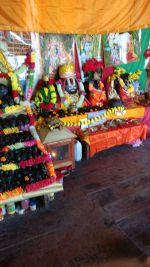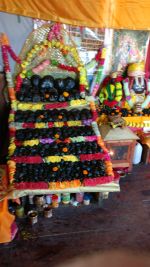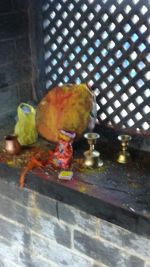Muktinath
Location
Located in Mustang district of Nepal, Muktinath temple is one of the 108 Divyadesams. Surrounded by Annapurna mountain range, it is at an elevation of 3710 meters. It is about 25 Kms from Jomson which has an airport. There is a daily flight from Pokhara to Jomsom. Most people travel by road from Kathmandu. It is a very scenic route with Trusuli, Modi and Kali-Gandaki rivers by the side passing through Manokamna Devi, Pokhara, Beni, Sri Galeshwordham and Jomsom. It is entirely mud road from Beni onwards. Sri Galeshwordham is known to be the place where Bharata, son of King Rishabha conducted austerities and penance after retiring from kingly life at a young age. It is after him that Bharatavarsha is named.
Temple
Muktinath is Lord Vishnu sitting in a meditative posture. It is said that Lord Vishnu Himself is sitting and meditating under the current deity and is maintaining the whole cosmic manifestation from there. "Om Namo Bhagavate Vasudevaya Mukthinathaya Narayanaya" is written on the entrance of the sanctum. The sanctum is surrounded by 108 ice-cold water outlets (mukti-dhara) signifying 108 Diyvadesams. The source of water is the Gandaki river spring at the top of the mountain. A few meters away from the temple is a Buddhist monastry housing the nirantara-jyothi or eternal flame fed by natural gas underneath. Muktinath deity is worshipped by Acharyas from the Vaishnava Ashram. Devotees in the Vaishnava ashram are eager to serve prasadam to visitors if informed in advance.
Yajna-shala
The temple has a yajna-shala, where 108 saligrama-shilas are worshipped. One of the big saligrama-shilas kept outside the inner temple weighs more than 70 kgs.
Saligrama-kshetra
Saligrama-shilas are found only in the Gandaki river-bed. Saligrama-shilas are very precious as Lord Vishnu is already manifested in them. These are carved by insects known as Vajra-keeta residing in Gandaki river. That place where Saligrama-shilas are present automatically becomes a tirtha-kshetra (holy place). People from far and wide come to Muktinath in search of Saligrama-shilas.
There are more than a hundred varieties of Saligrama-shilas. Those that can be enclosed within a fist are worshipable at home whereas others that are bigger are generally kept in temples or mutts. It takes a lot of expertise to identify a genuine Saligrama-shila. While few of them have external carvings spiraling inwards, most of the others have no trace externally. According to the head priest of Muktinath, one should never break a shila to check for carvings; they are to be worshiped in their whole form with faith.



